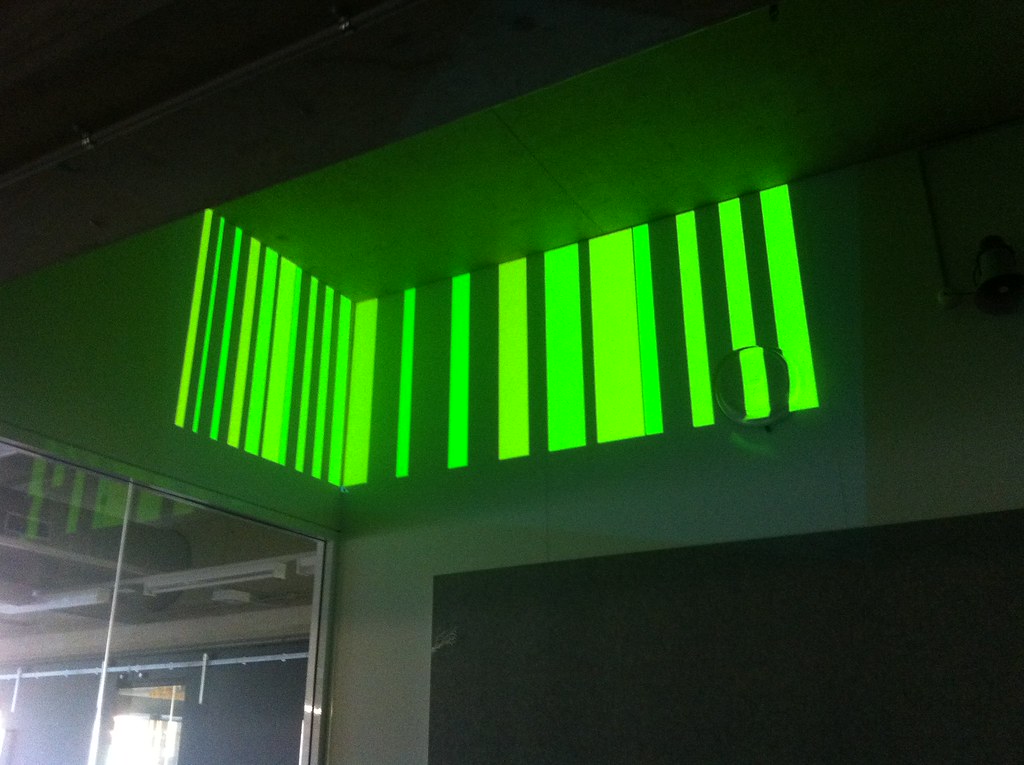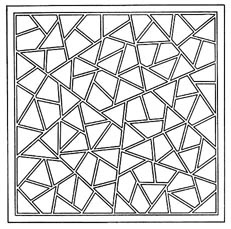A short post in response to ACT Planning Minister Andrew Barr's op-ed 'Griffin is Dead' which, as noted in a Canberra Times article today, has caused some controversy, particularly for comparing Walter Burley Griffin to a character from the Simpsons.
I dont really wish to pick up on the 'blasphemous' aspect of Barr's comments - my feeling is that no matter how highly revered a figure may be, they, their position, their influence or the way we understand them should not be exempted from critical discussion.
My motivation here is to clarify the relevance of Griffin to contemporary Canberra. It appears, rather sadly given he is the Planning Minister, that Barr has little knowledge of the Griffin plan and therefore is not in a position to say that Griffin is irrelevant to contemporary Canberra.
Walter Burley Griffin was born in 1876. He has had no involvement in the development of Canberra since 1920. Yet his legacy and the deconstruction of his “ideal city ” vision continues to dominate debate about the future of Canberra.
There seems to be some public confusion about the 'Griffin Legacy' and the Griffin Plan, and about Griffin in general - to the extent that I often hear the public blame Griffin for planning issues in Belconnen or Tuggeranong! Anyway to clarify, the Griffin Legacy was first a historical project undertaken by the NCA that attempted to catalogue departures from the Griffin Plan and assess which aspects were still possible to implement.
For example, it would be now almost impossible to move the location of institutions such as Parliament House and the National Gallery, or to build the Causeway and reconnect the railway to the north side of the lake with a Central Station at Russell and another station at Garema Place, just as it would be difficult to move Defence from Russell so that instead it could be the intended Market Centre with Constitution Avenue the High Street connection to the Civic Centre.
This first phase also included a design exploration to test how greater density could be achieved in central areas while keeping within Griffin principles - this part of the project was in part a response to the ACT Government's Canberra Spatial Plan which called for greater density.
Out of the initial Griffin Legacy study which was published as a substantial book, came planning proposals that were also branded as Griffin Legacy - perhaps with hindsight there should have been more focus on clarifying with the public the distinction between the Griffin Plan and the Griffin Legacy, as the ultimate outcome was to add to public confusion about the use of the Griffin name. I largely support all of these proposals but I dont intend to discuss them here, except to say that some aspects of the plans were contested by some as being contrary to the Griffin Plan, or at least to details of the Griffin Plan. However even if in the spirit of Griffin or inspired by Griffin, or as the NCA intended - in keeping with or perhaps re-interpreting Griffin principles - this is not the only example of Griffin's name being questionably used to justify projects or positions, and hardly the worst (think "don't you dare touch our vast picturesque landscape" see note on Holford below, or not much better "this ASIO HQ is not scary, it really will contribute to a vibrant boulevard high street"). Rather than attempt to re-invent Jebediah Springfield ‘s legacy, Lisa Simpson decided to leave the past in the past. Perhaps it is time Canberrans did the same.
Walter Burley Griffin is dead. We should not be casting back a century for answers to Canberra’s contemporary challenges. Griffin could never have foreseen the changes in lifestyles that technology has delivered and that climate change will require. We should not try to re-interpret his ideal of the city of the future.
Well to rebuff this explicitly - Canberra would not be facing many of it's contemporary challenges if the Griffin Plan has been implemented more fully and particularly would be better ready to respond to climate change. Griffin imagined an egalitarian city that was easily accessible for all because it gave primacy to pedestrians and public transport. Canberra as Griffin designed would be denser and more compact, but still with lots of high quality open space, and houses and business would be no more than 5min walk from the nearest tram stop. Reducing car dependency is the number one contemporary challenge for Canberra.
Current ACT Government policy, articulated through the Canberra Spatial Plan, supports the development of a compact city and sets targets for 50% of future urban growth to occur within a 7.5km radius of Civic. It also proposes keeping future urban development within 15km of Civic.
Planning policies to support the development of a compact city and to have higher density along major avenues such as Northbourne Avenue and Canberra Avenue to support more frequent public transport, which I applaud, are absolutely in keeping with Griffin's vision. This point alone easily demonstrates that the Griffin's ideals are a rich source of inspiration for 'new' ideas to address Canberra's contemporary challenges and that therefore Griffin far from being dead is still relevant to Canberra.
Another contemporary challenge might be that of understanding and caring for our environment. The Griffin's were committed environmentalists, with Marion Mahony even making extensive catalogues of Australian flora. The Griffin Plan symbolically inscribed a relationship between the city and it's landscape that assists us to understand our place in the environment. Certainly the idea of not building on hills is one that has contemporary relevance to the public who appear to hold on to it very dearly.
My vision for Canberra in 2030 is a progressive, inclusive and vibrant city with something to offer singles, couples and families. A city that offers services, entertainment, hospitality and amenities for a growing local and regional community. A place where people from many different backgrounds can live, work and play.
Canberra is taking significant steps towards becoming more diverse and embracing different life styles and life choices. We now have a variety of neighbourhoods, public places and private places that a range of people can enjoy. I think this should continue.
The next twenty years will be all about making the right choices to become a more affordable and sustainable city. Making the right choices to ensure equitable access to housing, jobs and education. Making the right choices to overcome long commutes and provide better public transport options. Essentially it is about planning to improve livability.
To further underscore that Barr is ignorant of the Griffin Plan, he fails to articulate how his vision is any different to Griffin's. Perhaps he, as I am, is just frustrated by the misappropriation of the Griffin name. But to make the right choices requires you to be properly informed. And without understanding our past, we risk not only repeating past mistakes but we also risk destroying our cultural heritage.
Layers of planning post Griffin have also added to our cultural heritage, and contribute to a legible richness that is not dissimilar to the historical layers that make Rome interesting. Many of the planners post Griffin were visionary and driven by idealism, just that their visions and ideals were different to Griffin's.
Holford's vision was for a garden landscape with objects placed as if in an English picturesque painting, where Griffin had intended continous boulevards with more formal plantings like Paris or Washington DC. In the 1960s and 70s NCDC developed a Y Plan with satellite cities (Belconnen, Woden etc) that gave primacy to efficient auto-mobile circulation but also imagined that people would live in the same satellite city that they worked in and that they would walk to their local suburban shops. At the same time the NCDC also had plans to protect Civic from auto-mobiles by circling it with freeways and multistory carparks so that the centre could be given to pedestrains (CityWalk and the overhead bridges) - these recalled Louis Kahn's designs for Phillidelphia. Then in a post-modern way planners such as Roger Johnson and more recently those at the NCA have been trying to stitch together and make sense of the disparate parts of the Parliamentary Triangle.
I like idealism and vision, and since self government there has been very little of it in regards to the development of Canberra. I remember once hearing the aspiration for West Basin explained as to create a Darling Harbour for Canberra but for it not to be quite as good!!
Canberra should always aim to be the premier city of culture in Australia. As the National Capital, Canberra is what Australia presents to the rest of the world and is equally important as a forum for Australians living in other states to understand national aspirations. The ACT Government sometimes forgets that this is the primary role of the city and that it is what differentiates their role from that of local government in the western suburbs of Sydney. I actually believe that the Federal Government should be more assertive about it's ongoing role in planning and funding the National Capital, but it appears that since they got their permanent Parliament House on top of the hill they have decided that Canberra is finished - note that a city can never be finished.
To be fair to the ACT Government, the recently announced carbon emission reduction targets are ambitious as is the urban infill target - both will require vision to be reached, and will have a profound impact on the city form - and the sustainable transport plan after being put on the back burner during the previous term of Government is now beginning to see increased investment in public transport and cycling infrastructure. Other interesting projects (topics for future posts) include the International Arboretum (TZG), and planning studies for Eastlake (ACTPLA & CSIRO) and the Yarallumla Brickworks (Hill Thalis).
Barr asserts that we should not try to re-interpret the Griffin ideals, but fails to explain what is wrong with them or articulate ideals of his own that depart from the Griffin Plan. Given this it is difficult to understand his motivation in trash talking Griffin. Perhaps Barr is frustrated by all planning or he would prefer to do his job with nothing to be compared against? He concludes his post by calling for more organic growth - something that Canberra is often criticised for lacking.Planning is indispensible to maintaining and improving cities as great places to live. But good planning also requires not planning; recognition that vibrant city life is partly spontaneous and that, in the long run, cities are likely to produce ways of living that we did not anticipate.
I have two points to make about encouraging diversity and spontaneity:
1) the planning regulations in Canberra are very restrictive contributing to uniform suburban housing typology (ie in the centre of the block, wasting land at the sides and in the front garden and excluding other typologies such as courtyard housing.
2) that procurement of all public buildings including even toilet blocks and bus shelters should be through two stage open design competitions that encourage young architects and new ideas (ie currently tenders for projects are usually restricted to those with previous experience and are one stage processes where cost is assessed at the same time as design ideas)
I hope that Barr is serious about encouraging good design and that Canberra can once again aspire to idealistic city planning. The appointment of an ACT Government architect is a positive first step.
So to conclude I totally reject the main thrust of Barr's argument that we should not try to re-interpret the Griffin ideals. The ideals or principles that the Griffins articulated in their competition winning plan were not their ideals alone, they were the ideals of the entire nation. As principles for ongoing planning and development of the city both as a National Capital and as a place to live, work and recreate, I believe that they are robust and of such contemporary pertinence that they should remain (or be reinstated as) central to Canberra's future. I have attempted here to demonstrate how well the Griffin ideals or principles have stood the test of time and are applicable to current challenges. Pat
I think we are actually in agreement but assume different starting points in knowledge in our readers.
I agree with your interpretation of “The Griffin Plan” - a compact city with frequent public transport on major avenues supported by greater density along these avenues. However, many people do not share that interpretation. Instead they use Griffin’s name to advocate a different vision based on how Canberra developed AFTER he walked away. Just look at the controversy over the National Capital Authority’s “Griffin Legacy” project. My point is that no one can “win” this argument or claim that they are the true holders of the “Griffin Legacy”.
Griffin is dead. Let him rest in peace. The policy responses required now are beyond anything he could have imagined. This is not to say that his ideas were bad… but simply that it is time to move beyond framing every planning debate through his “ideal city of the future” vision.
Andrew
So it is the misappropriation of the Griffin name that Barr is taking issue with - a concern that I too share. Of course good ideas are good ideas and should be able to stand by themselves without the need to nostalgically appropriate Griffin's name. That said, the Griffin ideals or principles, whether ascribed to Griffin or not, remain relevant and should be articulated.
I believe it is the collective vision of the public that will provide support for Canberra's leaders to reach their aspirations - the public need to be inspired by their leaders visions, and I believe that the basis for this is clarity. To make a good plan for Canberra's future I believe that it absolutely must be framed in the context of an understanding of past Canberra plans - Griffin's plan and those post Griffin. I think Barr is misguided in trying to 'move on' from Griffin and that he would be best served in taking a leadership role in improving the public's knowledge of Canberra's planning history and increasing their design literacy. Canberra's Centenary programme presents Barr a perfect vehicle to do just this (both within Canberra and around the country).
One final note while on the theme of accuracy - Griffin didnt walk away from Canberra any more than Utzon did from the Opera House, he was pushed out. To be explicit Griffin's contract was not renewed and then he didn't accept a token role subordinate to the planners who had been undermining the competition winning plan since the start. I hope that this was an accidental slip up on Barr's part.












